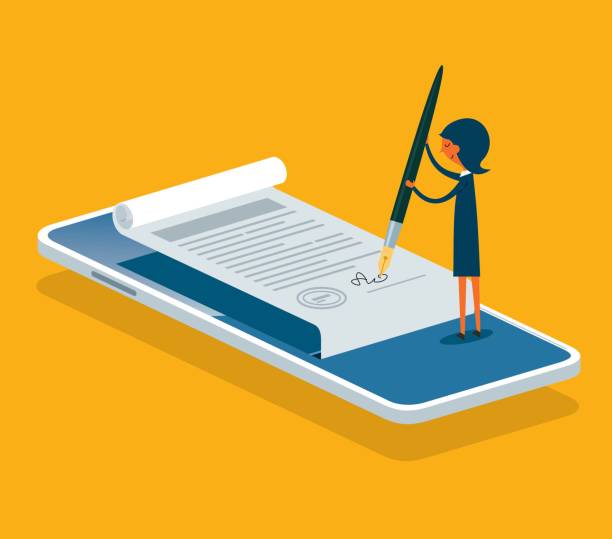Step-by-Step Guide to Creating a Digital Signature on Android

Introduction
In this digital age, where online transactions and document sharing have become the norm, ensuring the authenticity and integrity of electronic documents is of paramount importance. One way to achieve this is by creating a digital signature, a unique identifier that verifies the identity of the signer and guarantees the integrity of the document. In this article, we will delve into the world of digital signatures on Android devices, exploring the step-by-step process and various tools available to create a digital signature effortlessly.
What is a Digital Signature?
Before we dive into the specifics of creating a digital signature on Android, let’s first understand what a digital signature is. In simple terms, a digital signature is a cryptographic technique that adds a unique identifier to an electronic document, ensuring its authenticity, integrity, and non-repudiation. It serves as a digital fingerprint, allowing recipients to verify the identity of the signer and detect any tampering with the document.
How to Create a Digital Signature on Android
Creating a digital signature on an Android device is a relatively straightforward process. Here’s a step-by-step guide to help you create your digital signature:
Step 1: Choose a Digital Signature App
The first step is to select a reliable digital signature app from the wide range available on the Google Play Store. Look for apps that have positive reviews, high ratings, and offer features that meet your specific requirements.
Step 2: Install the App
Once you have chosen the digital signature app that suits your needs, install it on your Android device. Visit the Google Play Store, search for the app by name, and follow the prompts to install it on your device.
Step 3: Open the App and Create a Profile
After installing the app, open it and create a profile. Typically, you will be asked to provide basic information such as your name, email address, and any other details required for identification purposes.
Step 4: Import or Create Your Signature
The next step involves importing an existing signature or creating a new one within the app. You may have the option to use your finger to draw your signature directly on the device’s screen or upload an image of your handwritten signature.
Step 5: Customise Your Signature
Once you have imported or created your signature, you can customise it according to your preferences. Some apps offer options to adjust the size, colour, and style of the signature to make it more personalised.
Step 6: Set Security Options
To ensure the security of your digital signature, it’s crucial to set up appropriate security options provided by the app. These may include setting up a password, PIN, or pattern lock to protect your signature from unauthorised access.
Step 7: Apply Your Signature to Documents
Now that your digital signature is ready, you can start using it to sign electronic documents. Most digital signature apps allow you to import documents directly from your device or cloud storage services. Open the document within the app, position your signature where required, and apply it with a single tap.
Step 8: Verify Your Signature
Verification is a crucial aspect of digital signatures. Whenever you receive a digitally signed document, you can verify the authenticity and integrity of the signature using the same app or compatible software. This ensures that the document has not been tampered with since it was signed.
Best Digital Signature Apps for Android
To help you get started with creating digital signatures on your Android device, here are some of the best digital signature apps available on the Google Play Store:
1. Adobe Sign A powerful app that offers a wide range of features, including advanced document signing capabilities.
2. DocuSign – Known for its user-friendly interface and seamless integration with popular cloud storage services.
3. SignNow- Offers a simple and intuitive interface with features like in-person signing and document templates.
4. SignEasy – Allows you to create signatures using your finger or stylus and offers advanced signing workflows.
5. HelloSign – Provides a secure and efficient way to sign documents electronically, with features like team management and document tracking.

FAQs
Q1: Are digital signatures legally binding?
A1: Yes, digital signatures are legally binding in many countries, including the United States, European Union member states, and others. They have the same legal status as traditional ink signatures, provided they meet certain criteria, such as using a trusted certificate and complying with relevant laws.
Q2: Can I create a digital signature without an app?
A2: While using a dedicated digital signature app provides a more streamlined experience, you can create a digital signature without an app. Some PDF reader apps and document management platforms offer built-in signature creation and signing capabilities.
Q3: Can I use my digital signature across multiple devices?
A3: Yes, most digital signature apps allow you to sync your signature across multiple devices, ensuring consistency and convenience. This feature is particularly useful if you frequently switch between different Android devices.
Q4: Can I share a digitally signed document with someone who doesn’t have a digital signature?
A4: Absolutely! Digitally signed documents can be shared with anyone, regardless of whether they have a digital signature or not. The recipient can verify the signature’s authenticity using compatible software or online tools.
Q5: Are digital signatures secure?
A5: Yes, digital signatures are highly secure. They use cryptographic algorithms to ensure the integrity and authenticity of documents. However, it’s important to choose a reputable digital signature app and follow best practices for securing your signature and associated private key.
Q6: Are there any limitations to using digital signatures on Android?
A6: While digital signatures on Android offer great convenience, there are a few limitations to be aware of. Some organisations or government entities may still require physical signatures for certain documents. Additionally, compatibility issues may arise if the recipient of a digitally signed document is using incompatible software.
Conclusion
Creating a digital signature on Android devices has never been easier. With the availability of user-friendly apps and robust security features, you can ensure the authenticity and integrity of your electronic documents with just a few taps. By following the step-by-step guide provided in this article and choosing a reliable digital signature app, you can embrace the convenience of digital signatures while maintaining the highest standards of security.
Centilio.com offers a user-friendly interface and seamless integration with popular cloud storage services, making it a top choice for digital signature creation.
External Links/ Sources:
Creating an eSignature on iOS, Android, and Desktop
How to create a signature for PDF documents on an Android phone
